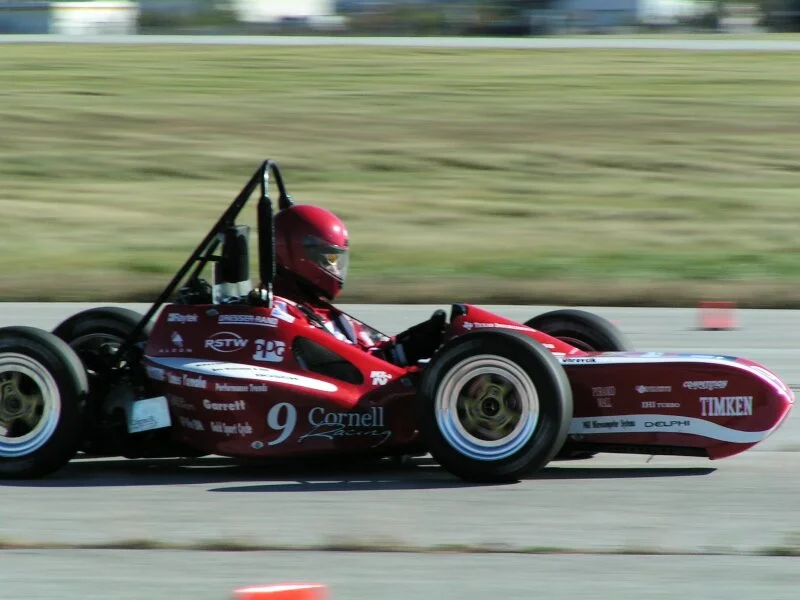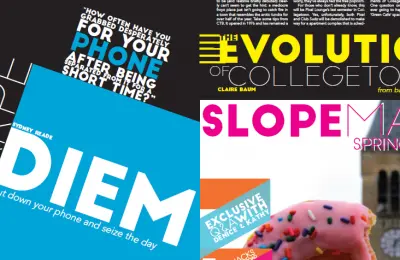Author: Zoe Zaneteas
As a student in Arts and Sciences, I have to admit that I’m not incredibly knowledgable about anything remotely science-related going on at Cornell; I enter the Engineering Quad only when I deem coffee from CTB necessary for me to make it through my day.
However, when I got wind of Cornell FSAE, a project team that builds and drives its own racecars, I knew I wanted to learn more. After MapQuesting myself to Duffield Hall, I sat down with Kern Sharma, Mechanical Engineering ‘17, to find out more about it.
Formula SAE (FSAE), or Formula Society of Automobile Engineers, started in the United States in 1986 and has since become an international organization with three annual competitions in the U.S., two in Canada, and others in Austria, England, Germany, and Australia.
At these events, students who are passionate about cars have the opportunity to see the racecars they design, build, and race stack up against those created by other creative and bright minds from all over the world. An FSAE competition includes two types of events: static and dynamic.
Static events test the thought and reasoning students employ in creating their cars. Each team prepares a presentation on the cost, business, and design aspects of the building process. Here’s a breakdown of what they entail:
- The cost presentation refers to a top-to-bottom analysis of the car. This includes an inspection of each part and how much it took to produce, taking into account both machining time and material costs.
- The business and marketing presentation is also important. Basically, this is where the team will demonstrate to venture capitalist judges that they are a viable organization.
- Finally, the design presentation is all about the engineering. Here, a panel of experts in the field grill students on their engineering rationale, or how and why they chose to build their car the way they did.
Meanwhile, the dynamic events test how the car actually races. Performance is measured through four different components: acceleration, skid pad, autocross, and endurance. Like the static events, points are awarded in each category, and the team with the most points at the end of the day wins.
Cornell has been involved with FSAE since the beginning; the team was formed in 1986 and went to its first competition in 1987. What started out as a group of twelve mechanical engineers has grown to include sixty to seventy-five students from all over the university and has since racked up 9 world championship wins. Cornell is considered one of the top teams in the FSAE game right now. According to Sharma, this year, Cornell Racing is looking to get their tenth win at the Michigan International Speedway Competition (MISC), the largest FSAE competition in the United States – and has a pretty good chance of doing it.
The MISC, held mid-May, features over 120 colleges and universities from around the globe, many of which have much more funding than Cornell’s team. Meanwhile, Cornell Racing only receives a small amount of support from the university, which means more constraints must be taken into account when they build their product each year.
This does not trouble Sharma. “We’re a tenacious bunch,” he says. “There’s really not much that can stop us from finishing the car.”
Cornell’s car this year is called the ARG15, named after Albert R. George, the professor who has been advising the team since the beginning. When asked what makes the Cornell car different from those of its competitors, Sharma emphasized the hands-on aspect of their team.

engineering.cornell.edu
Professor Albert R. George
Many of the schools competing in FSAE events will have parts of their cars made for them; by contrast, every part of the Cornell car has been made by Cornell students. It therefore makes sense that members of the team receive course credit for their work. “We learn more in Cornell Racing than in any other engineering class,” says Sharma. “On the team, you learn how this stuff is really done, not just how it’s done in the textbook.”
Interested in Cornell Racing? Good news. Sharma says that anyone can join the team, whether they are a mechanical engineer hoping to work in the automobile industry or an English major getting their degree in Shakespeare (there’s even an MBA student on the team!). One can expect to find a broad range of activity going on in the Upson Hall basement, where FSAE is located, but should expect the time commitments to range from big to bigger.
Still, for the members of the team, all the work is worth it. Sharma puts it simply: “We build and drive racecars. Not much is cooler than that.”

it.wikipedia.org




















Alyssa Phelps
Omg this is the best pi day article I've ever read. Kelly Webb, whoever you are, you're a ...
Roro
I don't know why my comment didn't show up here! Not only did I know gourmet study food, I...
Roro
We are so impressed at the gourmet way to study in this century!!!! In 1958 I got hot wate...
Mingna
I really lke what you are doing older brother!
Lisa
This is awful. I know for a fact that at least one person in this video didn't know it was...